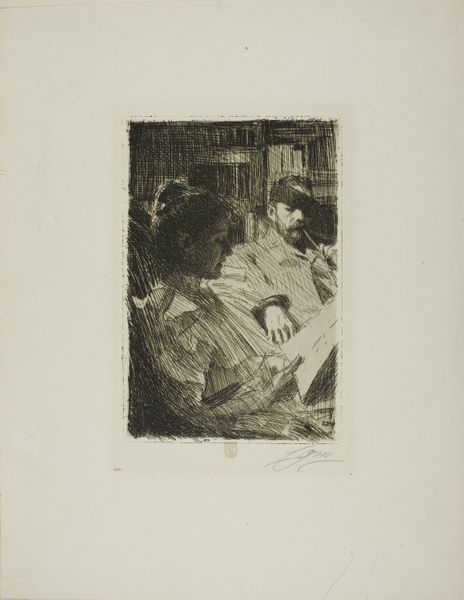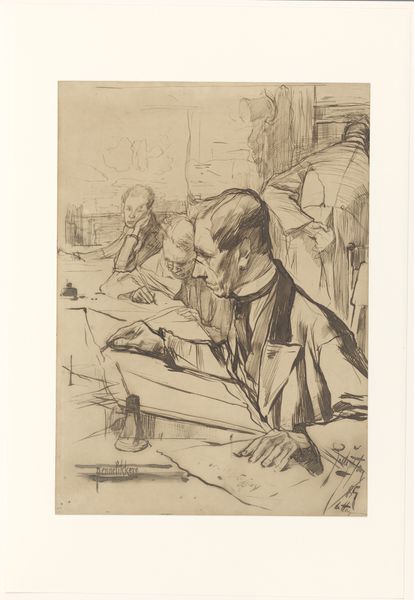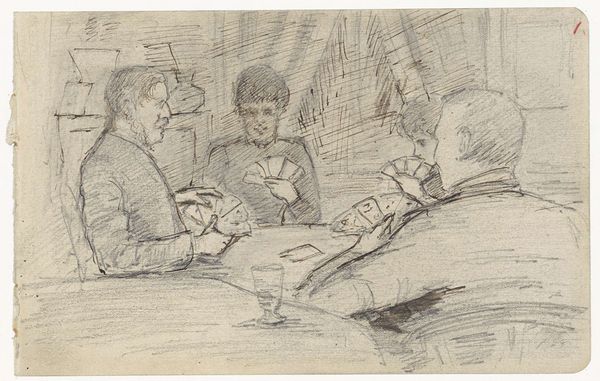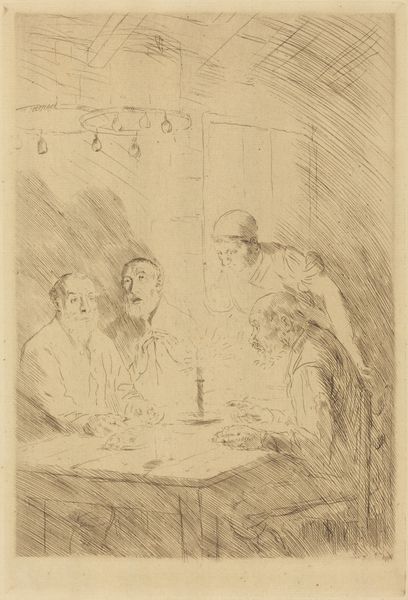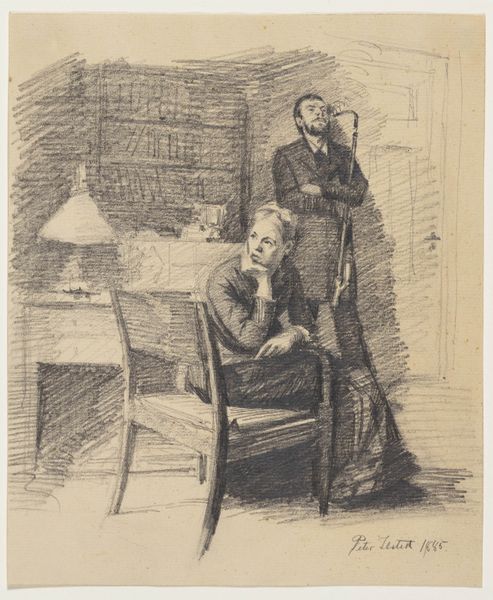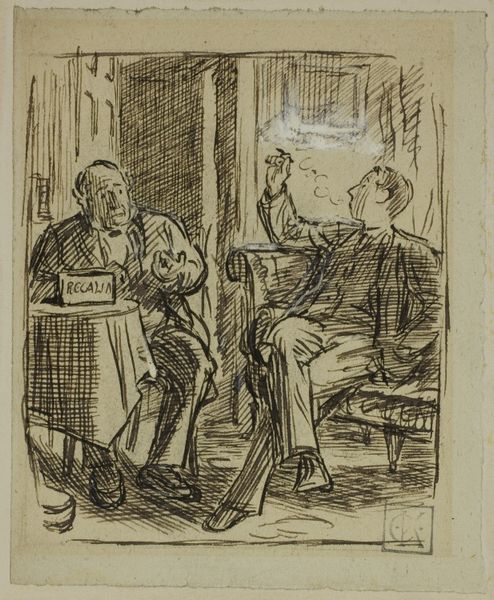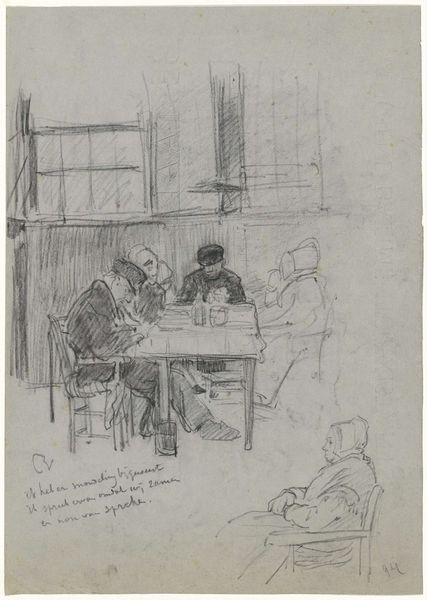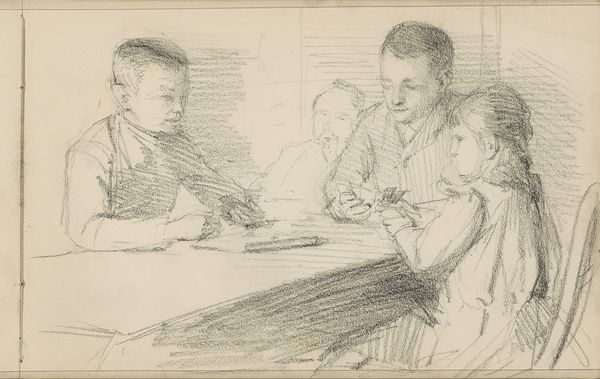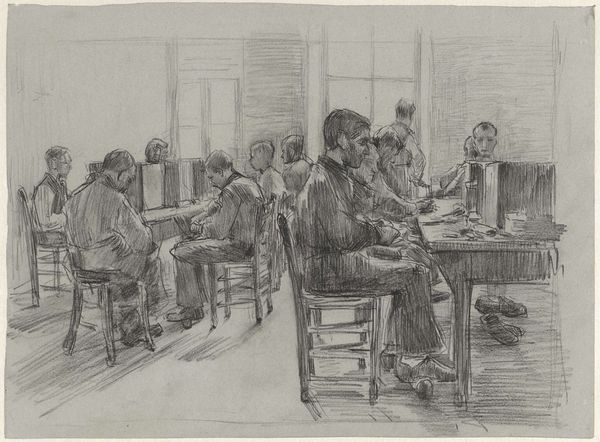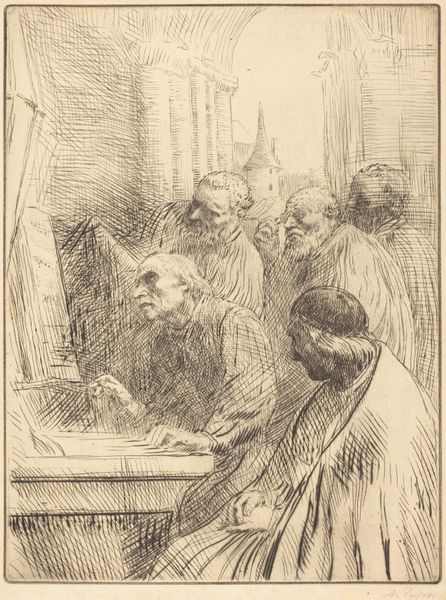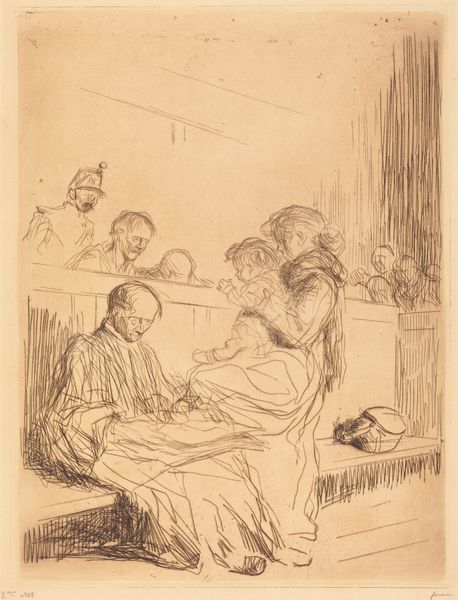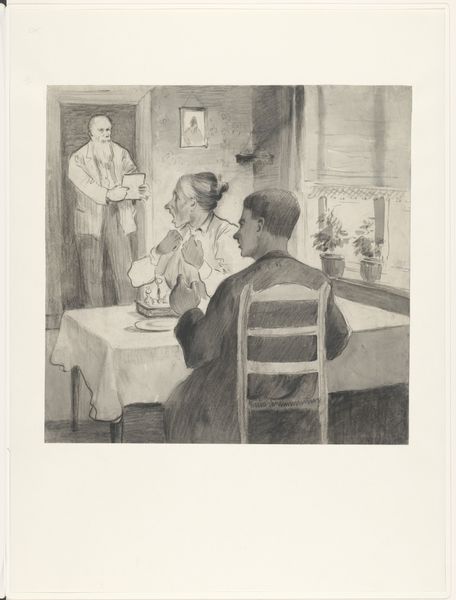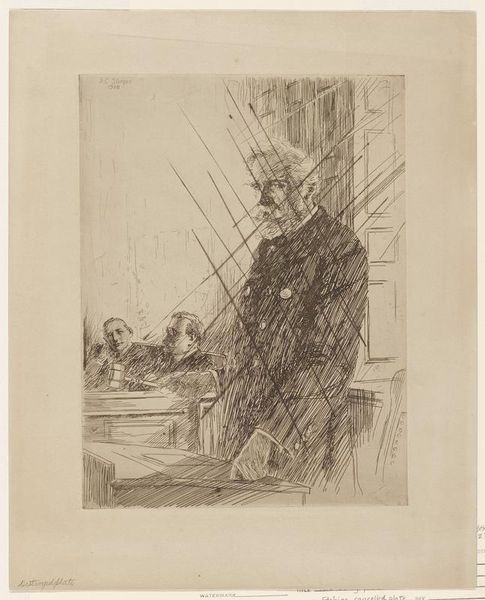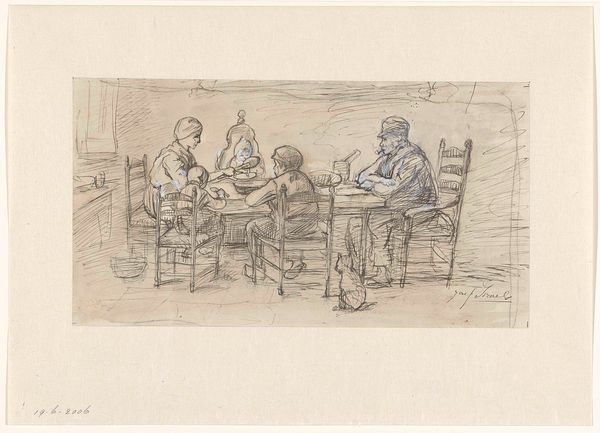
drawing, pencil, charcoal
#
pencil drawn
#
drawing
#
pencil sketch
#
landscape
#
charcoal drawing
#
figuration
#
pencil drawing
#
pen-ink sketch
#
pencil
#
genre-painting
#
charcoal
#
realism
Dimensions: height 365 mm, width 279 mm
Copyright: Rijks Museum: Open Domain
Editor: Here we have Anthon Gerhard Alexander van Rappard's "Zaal met drie blinde borstelmakers en een klerk," a drawing created sometime between 1868 and 1892, using primarily pencil and charcoal. There's such a strong feeling of quiet, laborious concentration emanating from this scene. What strikes you most about this piece? Curator: I see a powerful commentary on the social conditions of the working class during the late 19th century. Van Rappard wasn’t merely depicting a scene; he was engaging with the broader societal discourse about poverty, labor, and disability. What do you make of the stark, almost journalistic quality of the drawing? Editor: It definitely feels very raw and immediate, almost like a captured moment. The details in their faces, the texture of their clothes… But why focus on brushmakers specifically? Was that a particularly vulnerable profession at the time? Curator: Precisely. Brushmaking, like many manual trades, was susceptible to industrialization and economic hardship. Furthermore, the depiction of blind workers forces us to confront issues of marginalization and dependence. Van Rappard, along with artists like Van Gogh, sought to portray the lives of ordinary people, often overlooked or ignored by the dominant art establishment. How might a contemporary audience have reacted to such a depiction? Editor: I imagine it would have been quite challenging for some. It really humanizes these workers, forces you to acknowledge their existence and their struggles, in contrast to maybe seeing them as just an anonymous part of the workforce. It makes you think about the societal structures that placed them in this position. Curator: Indeed. Van Rappard’s drawing serves as a potent reminder of the role art can play in shedding light on social injustices. Thinking about art’s public role shifts my whole interpretation of such images. Editor: It is so interesting to hear about the impact that sociopolitical context had on art production, reception and the politics of the work itself.
Comments
No comments
Be the first to comment and join the conversation on the ultimate creative platform.
